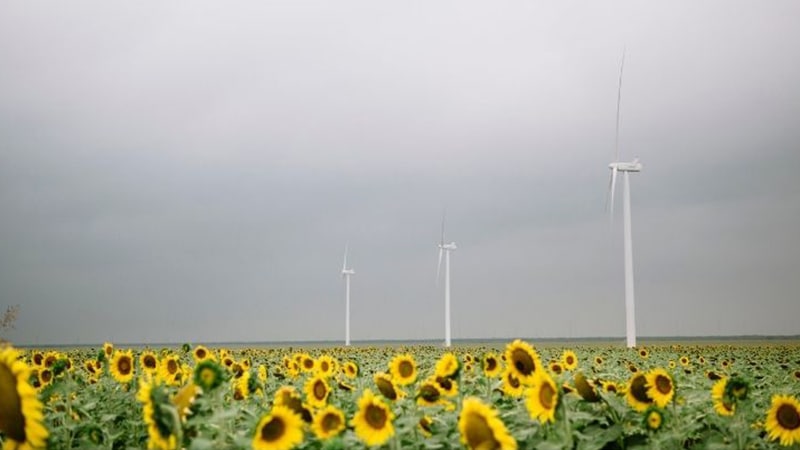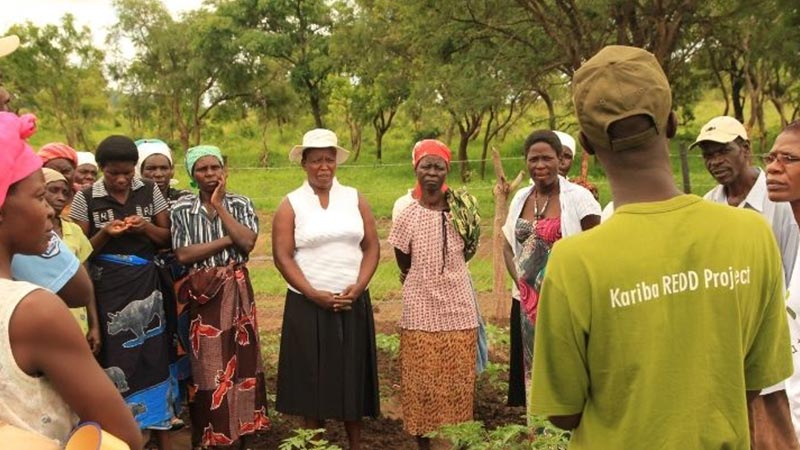January 19, 2021
Lessons learned from Signify on the road to carbon neutrality
Signify, formerly the lighting business of Philips, achieved carbon neutrality last September, delivering on a promise forged at COP21 in 2015. During the decade, the company also reduced its CO2 emissions by 70%.
Achieving carbon neutrality is not for the faint of heart and it’s all the more taxing if you have a multi-national presence, with a global manufacturing footprint and supply chain.
We benefited from an early start, having recognized the need to check our emissions earlier in the decade. Still, we learned a lot on our path to carbon neutrality that can help others and speed their efforts. What follows are some nuggets of advice, hard-earned through experience.
First off, success on emissions reductions is dependent on making it core to your strategy. This means drafting business goals that align with and can be accomplished through efforts to reduce emissions.
Other steps are also key, including establishing science-based targets, dissecting every aspect of your operations to save energy and emissions, and investing in measurable, worthy projects that offset unavoidable carbon emissions.
From the outset it’s important to involve teams from supply chain management, manufacturing, business travel, human resources, energy procurement and real estate, as decisions made by them will directly impact your carbon footprint. Leave no stone unturned.
We broke down and reviewed energy use across all our operations. Then we set about transitioning to energy efficient technologies in our offices, manufacturing, and logistical sites. Naturally, installing our own energy efficient LED lighting was a no-brainer. But significant investment was made in energy efficient manufacturing technologies and more efficient HVAC systems.
Our supply chain and logistical operations provided rich pickings for emission reductions. In a goal to reduce air freight, we re-engineered our loading strategy and struck a partnership with the Maersk shipping line, using only its most sustainable vessels. At the same time, we began transitioning our transport fleet to electric and hybrid vehicles. Elsewhere, policies were introduced to weed out unnecessary business travel.
The shift to electricity from renewables such as solar and wind power was not achieved overnight given our presence in 74 countries. It was planned and executed in a phased way.
It made sense to prioritize strategic regions with relatively high electricity consumption and/or a more developed level of renewable electricity. Then gradually, we tackled regions with lower consumption and less developed renewable electricity markets.
Today, 100% of our electricity comes from renewable sources. Key to this were two virtual power purchase agreements. In 2016, we started with a windfarm in Texas in the US and in late 2019 an agreement was made to purchase at least ten years supply of electricity from an onshore Polish windfarm that generates 92 Gigawatt hours annually. This powers all our operations in Poland, which account for 25% of our global electricity consumption. The virtual private partnership agreement in Poland is helping to shift this coal-based electricity market to a more renewable one.

And in 2017, a renewable electricity deal in the Gulf was secured, the first of its kind in the region to use the International REC, a renewable energy documenting standard.
At the time, the Gulf region was ripe for a breakthrough. It was a region where our electricity consumption was relatively high, while the local electricity market for renewables was underdeveloped. Only 1% was renewables at that time. So, we took a bold first step to create demand in the region for traceable, credible renewable electricity.
Despite best intentions, some emissions are unavoidable, so offsetting will be an inevitable component of most plans to achieve carbon neutrality, particularly for global manufacturing companies.
Offsetting has become an industry in itself and there are myriad options available. Choosing the right partner(s) is therefore important and credibility and traceability of carbon offsetting projects are necessary considerations.
To close our emissions gap, we worked with carbon offsetting partner South Pole. This specialist firm helped us navigate various schemes to focus on programs aligned with our corporate social responsibility programs. Our employees were actively invited to participate in the selection of offsetting programs. Winning projects included a reforestation project in Colombia, which restored 1,116 hectares of forest in Càceres and surveyed and mapped an additional 9,640 hectares of land in Cravo Norte. According to our value creation model, the local community benefited from EUR 70 million invested in conservation and restoration of the forest in 2019.
Another project in Africa protects 785,000 hectares of forest and wildlife on the southern shores of Zimbabwe’s Lake Kariba.

Our employees also selected an off-grid solar energy program in India that has given rural populations access to light. So, the twin benefit was realized of reducing environmental impact while increasing the wellbeing of local communities in rural areas.
If communities are to maintain and grow their solar power installations, they need onsite support. We therefore worked with partners to train and build a network of local entrepreneurs, mostly women, to support these rural communities.
We work with various NGOs, including The Climate Group, a non-profit organization that works with business and government leaders to tackle climate change. This partner of the UN helps to organize Climate Week New York City and works with organizations to turn commitments into action. We joined its RE100 corporate leadership initiative committing to 100% renewable electricity and its EV100 program aimed at making electric vehicles the new normal by 2030.
Working with such a group introduces us to other organizations taking the same journey. It allows us to transfer inspiration into collaboration and action, and do it at speed.
Other worthy initiatives, like the World Green Building Council’s (WGBC) Net Zero Carbon Buildings initiative, further underscore the need to learn from each other, make a commitment and most important of all, act.
In 2018, we became a signatory of the Net Zero Carbon Buildings initiative, pledging to make all the buildings in our control carbon neutral by 2030 and to advocate the goal for all buildings to be net zero by 2050. We also collaborate with the WGBC on initiatives to make buildings healthier through “human centric lighting” that can improve people’s wellbeing and performance, and UV-C lighting which can inactivate viruses.
Working with respected bodies creates a virtuous circle and amplifies our voice in the corridors of power. This is necessary as if we are to tackle the crisis head-on, governments must be onboard. Through advocacy, accountability, and collaboration we learn from each other and move faster. The race to the future need not be an uphill battle.
With carbon neutrality achieved, there’s still more work ahead. It’s important to remember that carbon neutrality is not an excuse for complacency. You must never take your foot off the accelerator on emission reduction. It’s tempting to breathe a sigh of relief when the carbon neutrality check box is ticked, but don’t.
Strategies vary. Some organizations have embarked on programmes to be ‘carbon negative’ – pledging to retrospectively remove all the carbon from the environment since they were founded.
With Brighter Lives, Better World 2025 – our five-year sustainability program – we have set a new goal to go beyond carbon neutrality with the goal of doubling our positive impact on both the environment and society. If achieving carbon neutrality is about doing ‘less harm’ to the world, the new program is about doing ‘more good’. The key theme is ‘doubling’ - ensuring that emission reduction is again center stage with the aim to double the pace at which we will meet the 1.5°C scenario set out by the Paris Agreement. The pledge is to meet this ambitious target across our entire value chain and do this six years early.
On top of that, we have other doubling targets over the next five years. We aim to double the percentage of our circular revenues to 32%. We will achieve this by expanding our circular portfolio that preserves value and avoids waste. For example, through highly serviceable luminaires and through services where customers instead of buying light bulbs, buy light as a service As the vendor we bear the costs, supply the lighting, provide the maintenance, and take care of the recycling, refurbishment and reuse of components.
Additionally, we plan to double our ‘brighter lives’ revenues to 32%. This includes revenues from lighting to increase food availability, safety and security, and lighting that improves people’s health and wellbeing.
All these goals are integral to our company strategy and seen as growth drivers. They will enable us to grow in a sustainable way and to increase our positive impact while, consuming fewer natural resources.
Today, the world is finally waking up to the climate crisis. The next decade has to be one of ‘climate action.’ Future generations will look back to this time and judge us, not on what we say, but on what we do.
Signify Global Integrated Communications
Neil Pattie
Tel: + 31 6 15 08 48 17
Email: neil.pattie@signify.com
Signify (Euronext: LIGHT) is the world leader in lighting for professionals, consumers and the Internet of Things. Our Philips products, Interact systems and data-enabled services, deliver business value and transform life in homes, buildings and public spaces. In 2023, we had sales of EUR 6.7 billion, approximately 32,000 employees and a presence in over 70 countries. We unlock the extraordinary potential of light for brighter lives and a better world. We have been in the Dow Jones Sustainability World Index since our IPO for seven consecutive years and have achieved the EcoVadis Platinum rating for four consecutive years, placing Signify in the top one percent of companies assessed. News from Signify can be found in the Newsroom, on X, LinkedIn and Instagram. Information for investors is located on the Investor Relations page.
